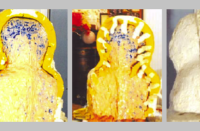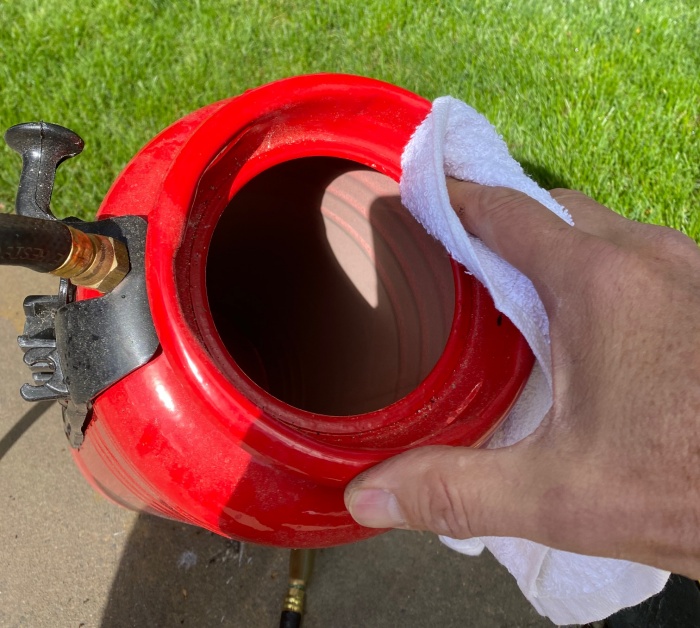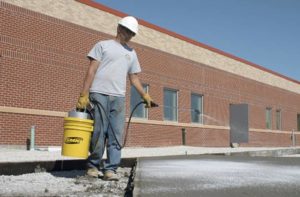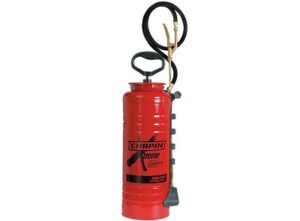Believe it or not, the traditional workwear of the painting and decorating trade has always been white pants and shirts. Some may ask, why on earth would a contractor wear white clothing on the job site? Well, the answer is simple. A professional painter should get very little paint on himself or on surfaces where paint doesn’t belong. Wearing white adds a level of caution and cleanliness to each task.
When it comes to applying coating with pump sprayers, airless or otherwise, equipment maintenance and proper preparation before applying are critical. After all, most people often regard coatings as the icing on a cake.
Such is the case when it comes to applying sealers to concrete. Whether it involves applying sealer to broom-finished concrete slabs or applying concrete sealer to colored and textured surfaces, you must apply concrete sealers according to manufacturer instructions. Product labels that include language like “For Professional Use Only” implies the person applying a product is skilled in the use of the related tools. This includes the product itself.
Pressure on the job
One of the challenges with hand-held pump sprayers is that suppliers generally sell them with one of two sizes of spray tips — big and bigger! So, it’s crucial that a large-sized tip is supported by the highest level of permissible air pressure in the tank.
Sprayers with an air valve to quickly recharge air pressure make the job go faster. This also allows the person applying the sealer to maintain a consistent application speed. Maintaining high pressure improves the material’s flow. It also produces a finer spray mist, one that doesn’t leave an inconsistent mil-thickness on the concrete surface. If you see buildup happening — stop! You either need to increase the pressure in the tank or inspect the spray tip for dirt or debris.
The viscosity of a concrete sealer may have some bearing on the pressure in your tank. However, with pump sprayers, keeping the pressure at the optimum level will result in a nice, even spray pattern.
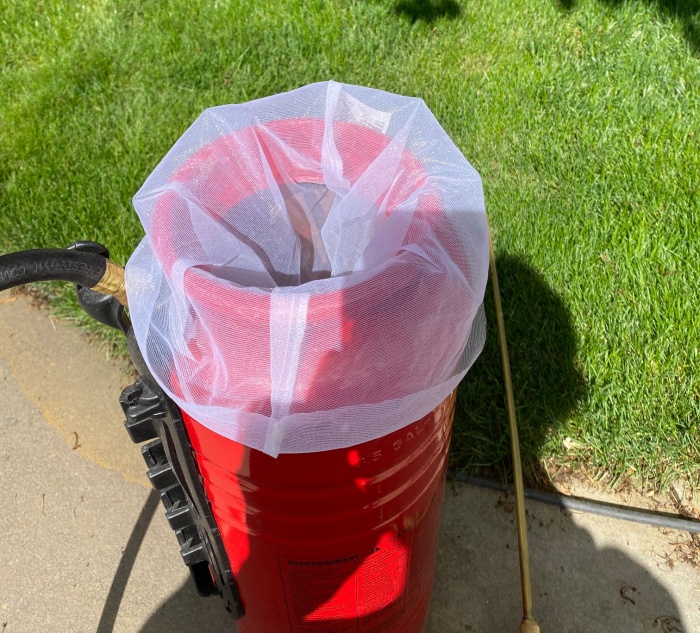
Checklist for success
Getting from start to finish on a concrete sealing project without problems likely means you’ve done the following:
- Properly cleaned the sprayer after each use.
- Wiped down the interior and exterior of the sprayer, including the hand pump and canister rim before use.
- Thoroughly mixed the sealer.
- Strained the sealer when pouring it into the sprayer.
- Wiped away residual sealer on the sprayer’s rim.
-

Submerge the strainer bag in water or thinner to make sure that sealer does not dry on the strainer. Remember to never turn the strainer inside out during the job. You may not always see debris in the strainer. Fully pressurize the canister.
- Checked spray for a consistent pattern on a piece of cardboard before applying sealer to the concrete surface.
This article’s purpose aims to help contractors and their employees develop a consistent checklist before using a pump sprayer. If you need to buy a new sprayer every few months, you’ve probably overlooked one or more of these things.
Reusing cleaning solvents
Cleaning a pump sprayer after each use can be fast and effective. And you don’t have to use new solvent to do so each time. Keeping partially full 5-gallon buckets of dirty solvent nearby will drastically cut down on having to use new, expensive solvents.
Once the solids in dirty solvents settle to the bottom, the discolored solvent still works effectively to initially clean sprayers. Mark these buckets as dirty xylene, thinner or acetone. These waste chemicals can effectively clean various concrete sealers remaining in the canister, hose, and spray gun and tip. For the second wash, use new solvent to rinse away any residual sealer in the lines. When done, dump the sprayer’s final rinse along with waste solvents into a new bucket.
Then, store three or four 5-gallon buckets of dirty thinner in a metal shed so the solids can settle. After that, pour off the liquids to reuse. Let the remaining material solidify and dry in the buckets before disposing them.
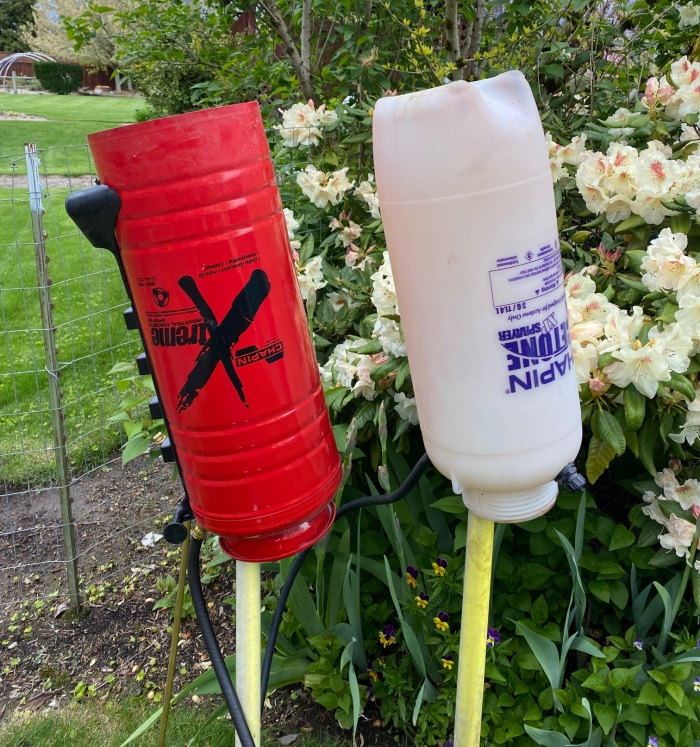
Storing pump sprayers
Remove the canister’s hand pump and cap and store the canister upside down. Doing so allows the sprayer to dry out. Also, give rubber o-rings a quick shot of lubricant so they don’t harden. Finally, keep a clean T-shirt rag nearby to quickly wipe down the sprayer before returning it to the job site.
Following these tips will drastically reduce or eliminate sprayer-related problems on the job. Minimizing problems will improve workmanship. That, in turn, will save time and money.
Shopping for pump sprayers?
Offered by Concrete Decor Store 3.5-Gallon Dripless Xtreme Concrete Sprayer
3.5-Gallon Dripless Xtreme Concrete Sprayer
by Chapin International Inc. 3-Gallon Industrial Acetone Dye Sprayer
3-Gallon Industrial Acetone Dye Sprayer
by Chapin International Inc

